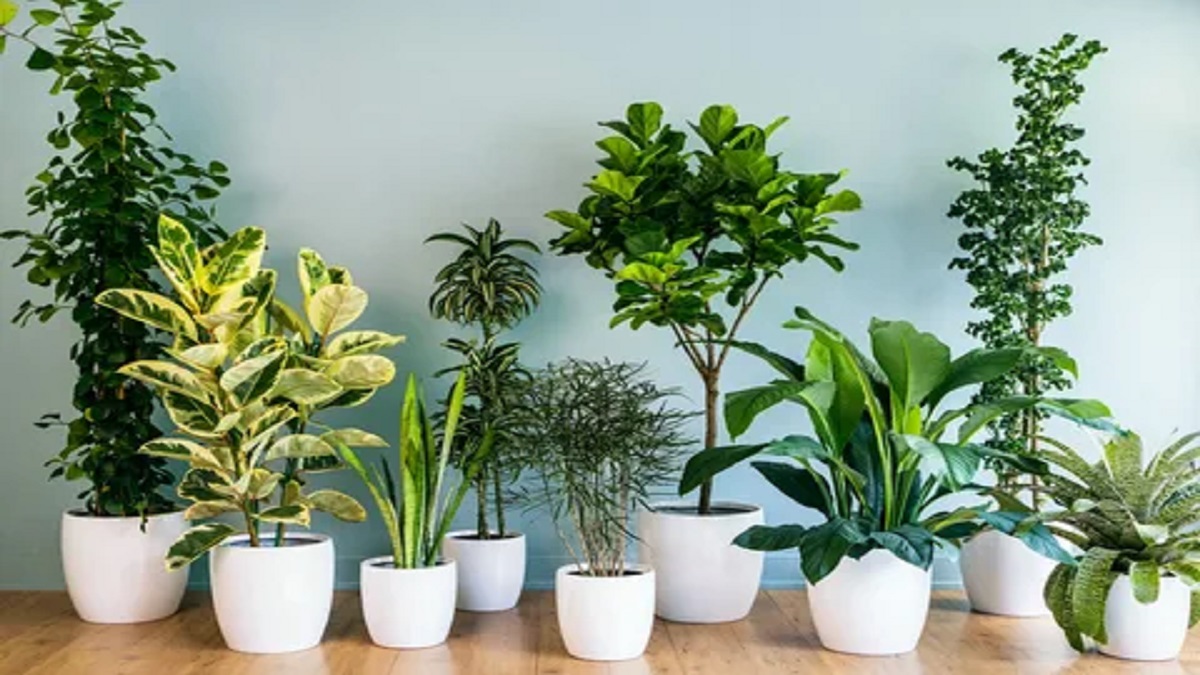The Transformative Power of Indoor Plants for Healthier Living
Good indoor air quality is vital for keeping us healthy and feeling good. It helps us breathe easily and prevents sickness. Indoor plants play a big role in making the air cleaner. They can remove harmful chemicals like formaldehyde and benzene. Plants absorb these toxins through their leaves and roots, making the air fresher for us to breathe. Having plants indoors not only adds beauty but also improves our overall well-being. So, having a few plants around the house can make a big difference in how we feel every day. It’s like having a natural air purifier that works silently to keep us healthy and happy.
Understanding Indoor Air Pollution:
Indoor air pollution is when harmful substances contaminate the air inside buildings. These pollutants come from various sources like household products and building materials. Common indoor air pollutants include formaldehyde, benzene, and xylene. These substances can cause health problems, especially when indoor air quality is poor. People may experience respiratory issues like coughing and wheezing, as well as allergies. Poor indoor air quality can worsen existing health conditions and affect overall well-being. So, it’s crucial to cut indoor air pollution. This can be done by using less toxic products and by improving building ventilation.
The Science Behind Air-Purifying Plants:
Plants help clean the air by using a process called photosynthesis. This means they take in carbon dioxide and give out oxygen, which we need to breathe. They also release water vapor through their leaves, called transpiration. This helps to remove harmful substances from the air. Studies show that some indoor plants, such as spider plants and peace lilies, can remove pollutants. These include formaldehyde and benzene. NASA conducted a study called the Clean Air Study to find which plants are best at purifying indoor air. This study found that snake plants and bamboo palms are great at removing toxins. This trait has made them popular for improving indoor air. So, having these plants in our homes can help us breathe cleaner air and stay healthier.
Top Air-Purifying Plants for Indoor Spaces:
Spider Plant:
Spider plants are great for cleaning indoor air. They help get rid of harmful chemicals like formaldehyde. Keeping them around can make your home healthier and fresher. – Peace Lily: Known for filtering benzene, formaldehyde, and trichloroethylene.
Snake Plant:
The Snake Plant is great for indoors. It helps clean the air by removing harmful chemicals like formaldehyde, benzene, and xylene.
Devil’s Ivy:
Devil’s Ivy is a great plant for cleaning the air indoors. It helps get rid of harmful stuff like formaldehyde, benzene, and xylene. It’s like giving your home a natural air freshener!
Boston Fern:
The Boston Fern is great for indoor spaces. It adds moisture to the air, which keeps it humid. It also filters out harmful substances like formaldehyde and xylene.
Aloe Vera:
Aloe Vera is a plant that helps clean the air by getting rid of harmful substances like formaldehyde and benzene. It also has some health benefits because it can be used for medicine.
Rubber Plant:
Rubber plants are great for indoor spaces because they help clean the air by removing formaldehyde, which can be harmful. They’re easy to care for and add a touch of green to any room.
Dracaena Varieties:
Dracaena plants, like the Janet Craig and Marginata varieties, are great choices for purifying indoor air. They help remove harmful substances like benzene, formaldehyde, trichloroethylene, and xylene. This makes your home a healthier place to breathe.
Tips for Using Air-Purifying Plants Effectively:
To use air-purifying plants effectively, first, place them in rooms where they get enough light, like near windows. Remember to water them regularly, but not too much, as overwatering can harm them. Keep the temperature moderate, not too hot or too cold. Every now and then, trim any dead leaves or stems to keep the plant healthy. If the plant outgrows its pot, consider repotting it into a larger one. Watch out for pests like bugs, and if you spot any, gently remove them or use a mild insecticide. By following these simple steps, you can maximize the air-purifying benefits of your plants and enjoy cleaner indoor air.
Creating a Healthier Indoor Environment:
Creating a healthier indoor environment is simple and beneficial. Adding air-purifying plants to your home not only cleans the air but also reduces stress and makes your space more beautiful. Plants can help, but air quality also needs proper ventilation. And, indoor pollution must be reduced. Opening windows regularly and using exhaust fans in kitchens and bathrooms help circulate fresh air. Avoiding smoking indoors and limiting the use of harsh chemicals also contributes to cleaner air. By making these small changes, you can create a more pleasant and healthier indoor environment for you and your family.
Elevating Air Quality and Well-Being with Air-Purifying Plants
Improving the air we breathe inside our homes or offices is vital. Plants can help by purifying the air, making it cleaner and healthier. Indoor air quality affects our health and well-being. By adding air-purifying plants to our indoor spaces, we can reduce pollutants like dust and chemicals. These plants work together as a team, filtering out harmful substances and releasing oxygen. Bringing nature indoors not only enhances the aesthetics but also promotes a sense of well-being. Taking care of air-purifying plants is easy and rewarding. They require minimal maintenance and add a touch of greenery to any room. Consider adding these recommended plants to your living or working space. They will give you cleaner air. Teamworks at home to create a healthier environment for everyone.


